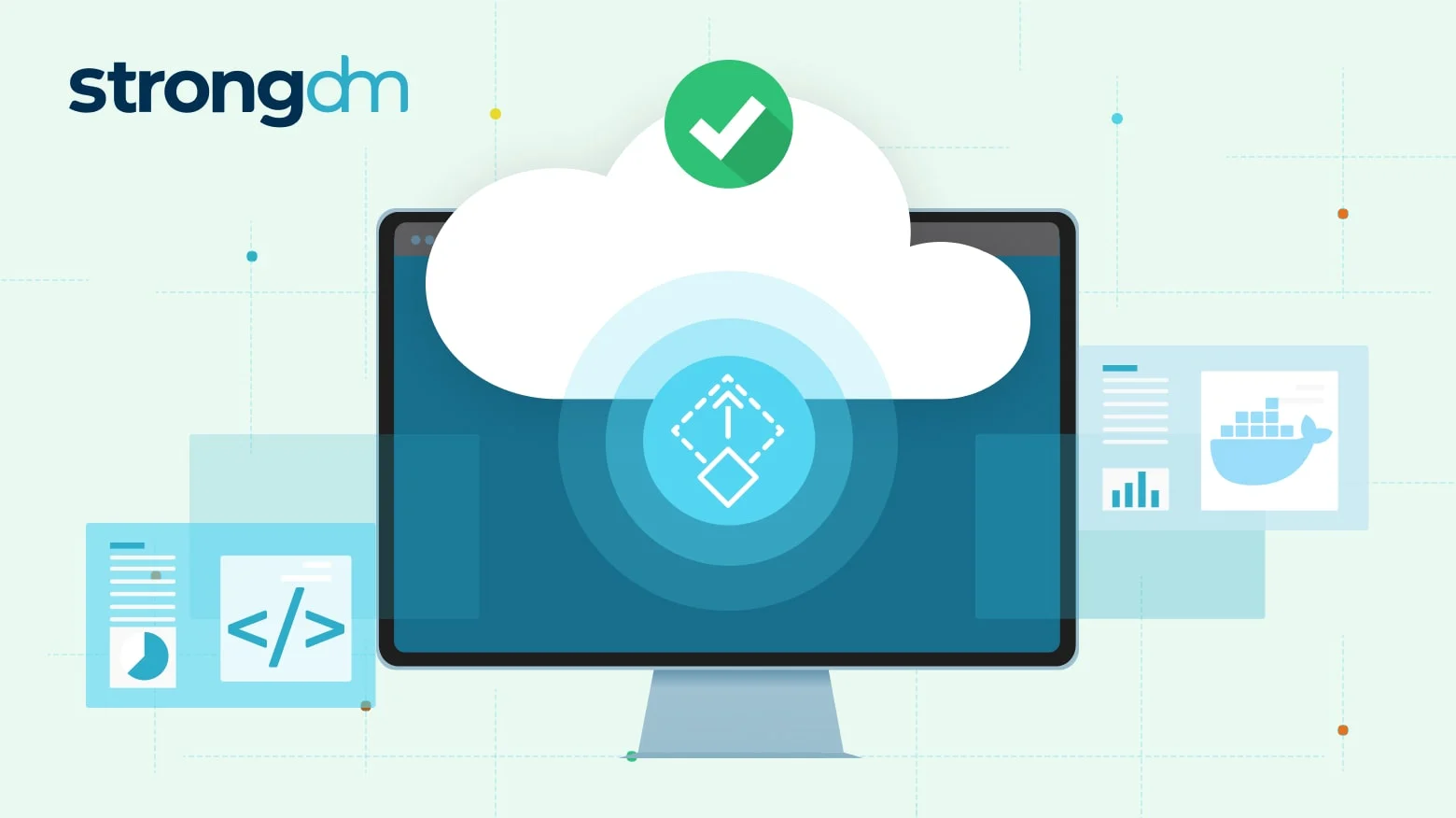What Is Scalability in Cloud Computing? Examples, Types, Benefits & More


Written by
Schuyler BrownLast updated on:
April 4, 2025Reading time:
Contents
Built for Security. Loved by Devs.
- Free Trial — No Credit Card Needed
- Full Access to All Features
- Trusted by the Fortune 100, early startups, and everyone in between
Summary: Cloud computing isn’t a trend, it’s how businesses grow. In 2022, most enterprises said they use cloud services, and more than half say they plan to spend even more on cloud applications and infrastructure this year. Cloud scalability offers flexibility at a reasonable price, making it an important business tool. In this article we’ll discuss what scalability is in cloud computing, the benefits of cloud computing scalability, and discuss ways businesses use scalability.
What Is Scalability in Cloud Computing?
Cloud computing scalability is the ability to increase or decrease your IT resources on demand when your organization’s need for computing speed or storage changes.
The fact that cloud computing is scalable makes it easy to choose your IT resources. When you need more data storage, you can add more. When your storage needs go down, you can decrease your capacity. Compare this to on-premises solutions such as buying and deploying servers. On-prem resources take more time to implement, cost more, and are permanent.
Scalability in cloud computing is similar to retail staffing practices during the holiday shopping season. Before the holidays, your favorite department store hires seasonal workers to help with the extra shopping traffic. When the holidays are over and the store no longer needs extra workers, it returns to its regular staffing levels.
Cloud Scalability vs. Cloud Elasticity
Scalability and elasticity in cloud computing are similar and often work together, though they have different definitions.
Simply put, scalability is the ability to add or subtract computing resources as needed. Elasticity is how fast you can adjust to and use those resources.
Which is more useful, scalability or elasticity? It depends.
Scalability usually refers to the steady, planned addition of resources such as networking, processing power, or data storage capacity, that are needed for steady, sustained growth.
What is elasticity in cloud computing?
On the other hand, elasticity tends to refer to how automatic the process is for adding or removing resources, often to respond to variable demand. For example, adding more processing power or storage capacity automatically to compensate for a spike in traffic, then decreasing it automatically when the spike is over.
A company that’s growing at a predictable rate is generally more concerned with scalability. A company with unpredictable needs, such as a streaming service where traffic fluctuates by the hour, is more interested in elasticity to increase or decrease cloud services on the fly.
What Are the Benefits of Cloud Scalability?
It’s possible to implement both scalability and elasticity with automated processes to accommodate both planned expansion and temporary fluctuations. This allows businesses, large and small, to use cloud services for at least some of their IT operations and take advantage of the following cloud computing scalability benefits:
- Agility, Speed and Convenience: Cloud scalability gives businesses a convenient, agile, and fast way to handle traffic increases by scaling up or down with a few clicks on a dashboard.
- Availability and Reliability: Whether you have random traffic spikes or are planning ahead for a holiday surge, scalability allows you to make sure customers and employees always have access.
- Cost Efficiency: Cloud services are more efficient use of resources than purchasing physical hardware that requires space and must be configured and maintained throughout its lifecycle.
- Disaster Recovery: Cloud scalability lets you easily bring more servers online for a secondary data center, and reduces costs during recovery by letting you scale to the resources you need, without paying for extra maintenance or hardware.
Cloud Scalability Challenges
In most cases, cloud scalability is easier than on-premises scaling. However, there are some challenges to be aware of:
- Complexity—Cloud infrastructure is complex to scale, especially for larger organizations, due to increased resources,endpoints, and data to manage and secure. Lack of expertise can also be an issue for organizations.
- Incompatibility—Legacy systems migrated to the cloud can cause issues later when scaled. Or if you use multiple cloud providers, they may have different approaches to scaling.
- Service Interruptions—Systems should be optimized for scaling to help avoid service interruptions.
- Data Security—Make sure your cloud service provides proper security and access controls.
- Lack of Expertise—Anything can be a challenge if your team isn’t familiar with it. Make sure to choose cloud technologies that are simple to implement and use, and provide your staff with the training to use them.
Types of Cloud Scaling: Scale Up vs. Out vs. Diagonal
While cloud services and infrastructure can vary based on the organization and its needs, cloud scalability can be distilled down to the following types:
Vertical scaling: scale up or down
Vertical scaling, also referred to as scaling up or down, increases or decreases computing power by altering memory, storage, or processing power on an already existing server, or by moving to a different server with the desired specification.
Vertical scaling generally involves changing equipment, but not software or code. It may cause down time or performance issues while equipment is upgraded, though the process should optimize performance in the long run.
Horizontal scaling: scale in or out
Horizontal scaling, also called scaling in or out, changes the number of servers available, increasing availability and allowing the spread of traffic across more instances. This process is usually software dependent, may be automated, and may have little or no downtime.
Diagonal scaling
This hybrid of vertical and horizontal scaling impacts both computing power and availability. Diagonal scaling allows maximum flexibility, especially for a growing company.
Examples of Cloud Scalability
An organization implements cloud scalability based on its business goals and its IT requirements. Here are some examples of cloud scaling in action:
A growing insurance company has more traffic to its website. The increase in visitors slows server performance and causes delays on the website, affecting customer service. The company decides to scale vertically, or up, and move their website to a larger virtual machine (VM) for better server performance.
Now look ahead a few years. The insurance company just merged with another company. It has twice the customers and twice as much data stored in cloud servers. It decides to scale horizontally, or out, and expands its storage space across more servers to better access the data.
Finally, the company eventually merges with yet another, while growing its customer base. Now it needs to move its website and add more data storage. This time it scales diagonally, scaling up and out, by moving the website to another larger VM while also adding more server instances.
How to Ensure Cloud Scalability
Cloud scalability lets you stay flexible as your business grows. Though your needs may change along with your goals, here are some universal tips to help the process go smoothly.
- Performance Testing—ongoing testing to measure factors such as latency, load, and capacity will show how applications perform during normal and peak conditions, and help you decide when and how to scale.
- Automation—you can optimize performance by setting parameters to automatically scale at certain thresholds.
- Load Balancing—distribute processes over many resources to optimize capacity and boost service availability.
How StrongDM Helps with Cloud Scalability
Scalability in cloud computing has made it possible for many businesses to grow in ways that weren’t possible before. Yet cloud computing is more than a “set it and forget it” operation.
Cloud scalability takes careful planning, execution, and monitoring. As you scale your cloud infrastructure, it’s essential to ensure secure access management to protect your sensitive information. StrongDM centralized access to secure and manage multi-cloud and hybrid infrastructure, reducing access risks and enabling business scalability.
See how StrongDM can protect your cloud data. Sign up for a free demo today.
Cloud Scalability: Frequently Asked Questions
What is elastic in cloud computing?
Elasticity in cloud computing is the ability to automatically add or remove resources in real time based on changing demand.
How scalability is achieved in cloud computing?
Scalability is achieved by increasing or decreasing computing resources—vertically (adding power to existing servers), horizontally (adding more servers), or diagonally (a mix of both)—based on business needs.
Why is scalability important in cloud computing?
Scalability ensures performance, reliability, and cost efficiency by allowing businesses to adapt resources to changing workloads without overprovisioning.
Next Steps
StrongDM unifies access management across databases, servers, clusters, and more—for IT, security, and DevOps teams.
- Learn how StrongDM works
- Book a personalized demo
- Start your free StrongDM trial

Categories:

About the Author
Schuyler Brown, Chairman of the Board, began working with startups as one of the first employees at Cross Commerce Media. Since then, he has worked at the venture capital firms DFJ Gotham and High Peaks Venture Partners. He is also the host of Founders@Fail and author of Inc.com's "Failing Forward" column, where he interviews veteran entrepreneurs about the bumps, bruises, and reality of life in the startup trenches. His leadership philosophy: be humble enough to realize you don’t know everything and curious enough to want to learn more. He holds a B.A. and M.B.A. from Columbia University. To contact Schuyler, visit him on LinkedIn.
You May Also Like




